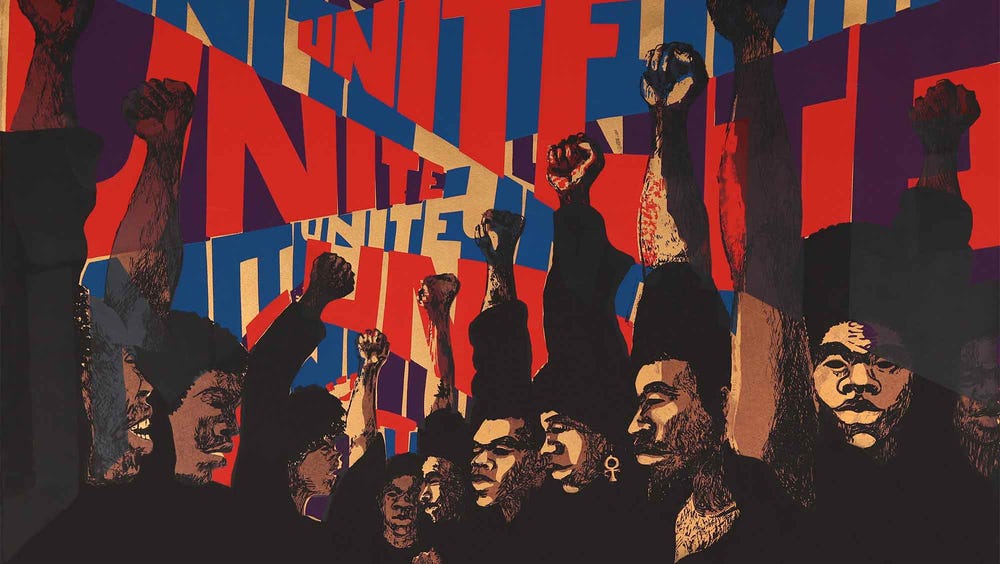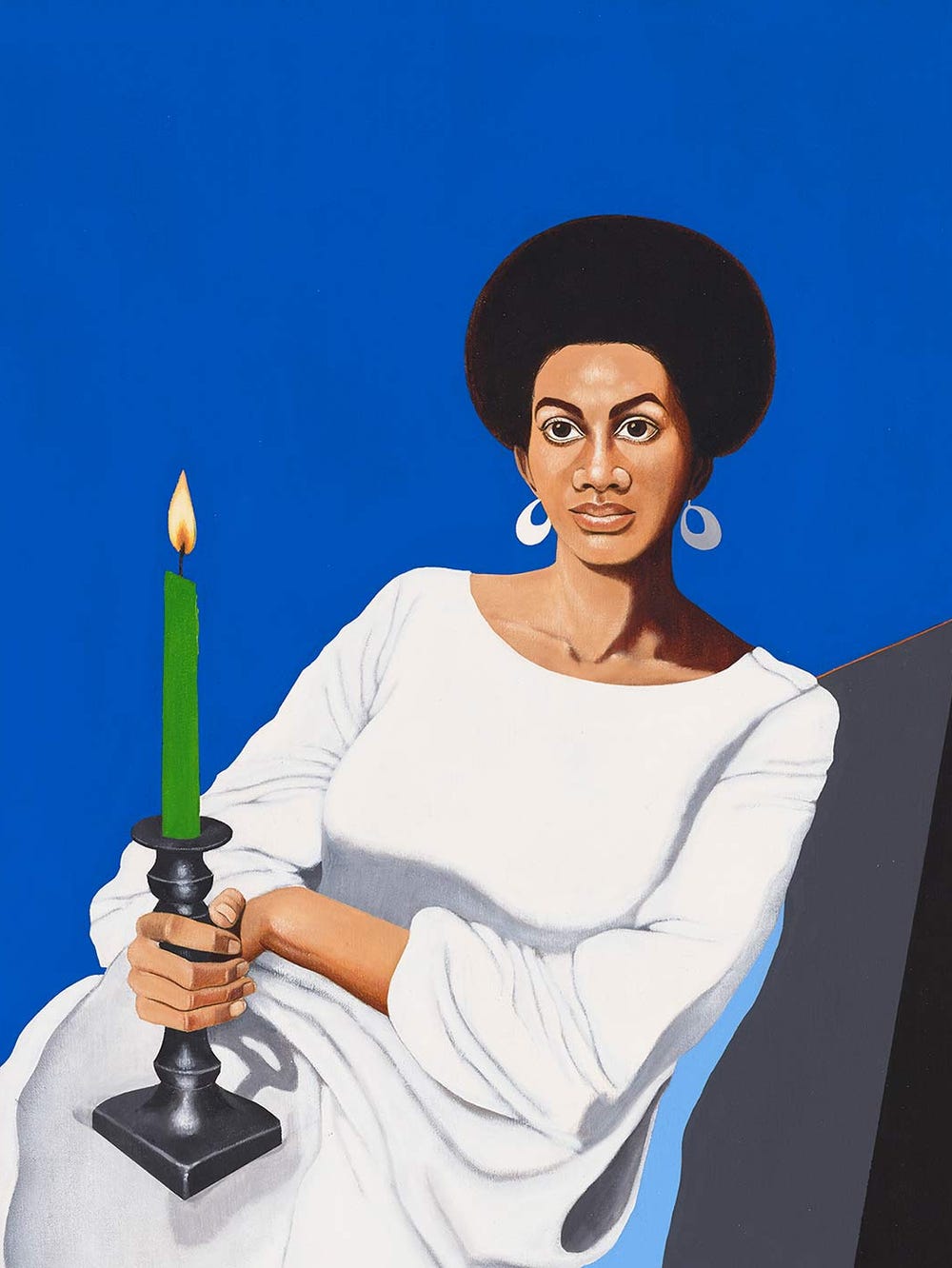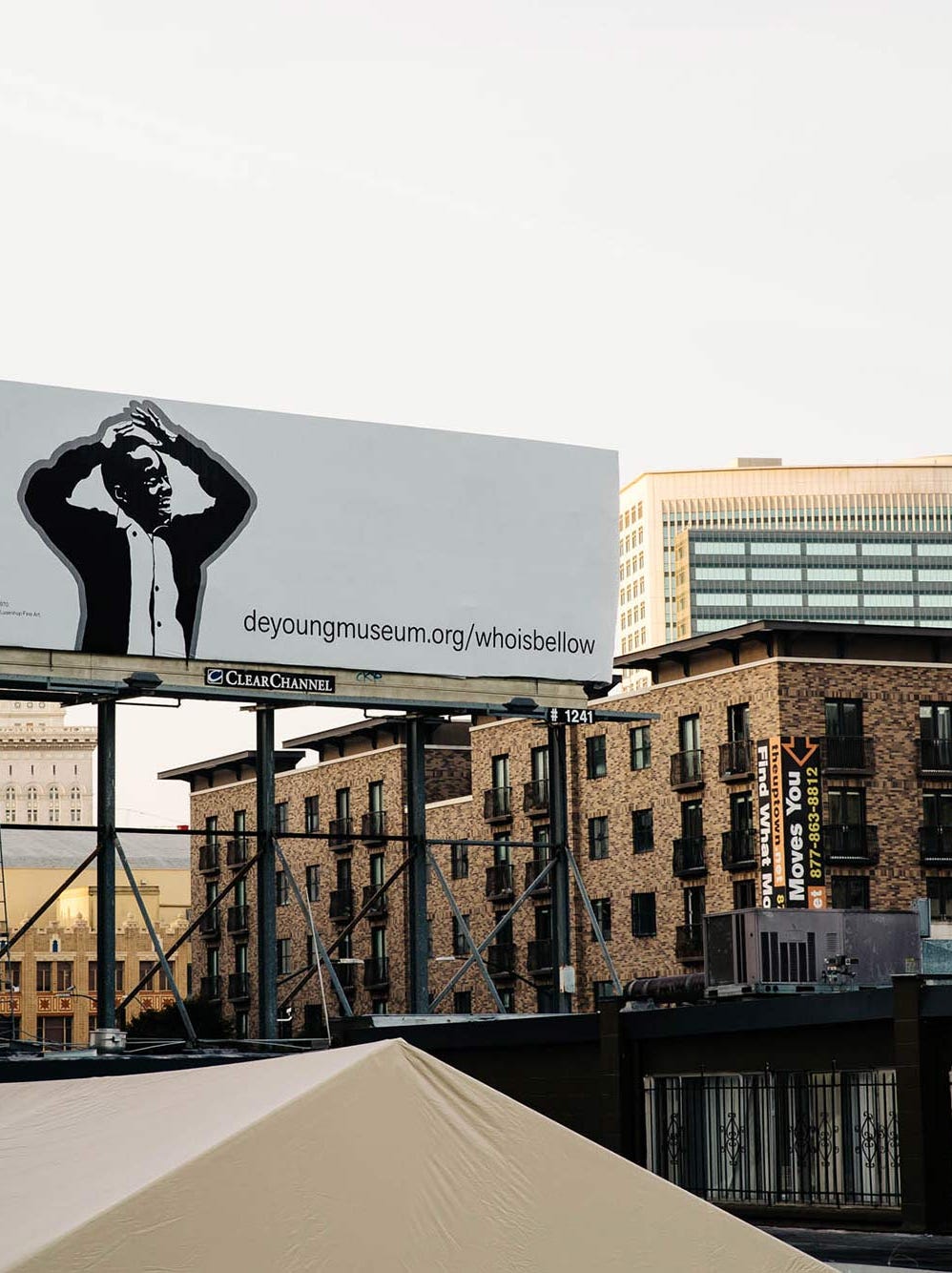Barbara Jones-Hogu, Unite (detail), 1971. Screenprint. Estate of Barbara Jones-Hogu, Courtesy of Lusenhop Fine Art
Soul of a Nation: Art in the Age of Black Power 1963 – 1983
Jump to
This internationally acclaimed exhibition, organized by Tate Modern, celebrates art made by Black artists during two pivotal decades when issues of race and identity dominated and defined both public and private discourse. The de Young’s presentation includes a focus on Bay Area artists whose work promoted personal and cultural pride, collective solidarity and empowerment, and political and social activism. Honoring the incredible legacy of Black Power in the San Francisco Bay Area, the de Young museum is hosting a line-up of programming and partners tied to celebrating this landmark exhibition. Featuring renowned artists, performers, musicians, activists, civic leaders, and others, these programs welcome special guests from around the Bay Area to bring Black Power to the forefront.
Recognize that voice? Add an exhibition audio tour to your visit and explore Soul of a Nation with narrators Danny Glover and Belva Davis. Audio tours are available as add-ons to online ticket purchases and are also available on-site.
In depth
Soul of a Nation: Art in the Age of Black Power 1963 – 1983 offers a survey of diverse artistic responses to the most seismic years of Black social activism, 1963 to 1983. The exhibition is divided into sections which address important artistic collectives, the rise of the Black Power movement, the greater social impact of the 1965 Watts Rebellion in Los Angeles, and the distinct expressions of the Black Power movement which coursed through artistic engagement with photography, abstraction, figuration, painting, sculpture, assemblage, textile arts, and poster design.
The exhibition takes as its point of departure the influential Spiral collective. Founded by Romare Bearden, Charles Alston, Norman Lewis, and Hale Woodruff in 1963, the Spiral group mounted a single group exhibition in 1965, agreeing to show only “works in black and white.” Lewis argued, “Our group should always point to a broader purpose and never be led down an alley of frustration. Political and social aspects should not be the primary concern; esthetic ideas should have preference. Is there a Negro Image?” In later years, successive generations of Black artists would look back to the Spiral group as a model for creative and independent self-determination.
As artists looked for opportunities to display their work and form their own exhibitions, public spaces offered new opportunities for displaying images of social justice and collective power. From 1967 to 1971, the Visual Arts Workshop of the Chicago artist collective Organization of Black American Culture (OBAC) painted multiple iterations of The Wall of Respect, a celebratory mural located on the city’s South Side. Featuring images of Black heroes, leaders, and icons, the mural became a community gathering place and inspired similar mural projects in other major American cities.
The urgency that drove major projects like The Wall of Respect also was motivated by the Black Power and Black Arts movements, which influenced Black artists to embrace the idea of creating art specifically for their own communities. The activist Stokely Carmichael first pronounced the rallying cry of “Black Power!” in a speech at the Mississippi March Against Fear in 1966. The phrase became a motto, a call to arms, and a declaration of the refusal to continue to tolerate racial violence. The ultimate visual expression of Black Power was located in the defiant image of a raised fist.
While the energy of the Black Power movement carried across the United States, different local communities were shaped by distinct incidents of inequity, injustice, and violence. One section of the exhibition illustrates the profundity of the artistic responses to the Watts Rebellion in Los Angeles, which broke out on August 11, 1965. The riots erupted after a White California Highway Patrolman pulled over Marquette Frye, a young Black motorist. A crowd gathered around the scene of the arrest, and the tensions which rippled among the onlookers erupted into five days of destructive violence. After the rebellion ceased, many artists took it upon themselves to restore their community through public art projects, often utilizing found objects in their work.
AfriCOBRA (the African Commune of Bad Relevant Artists), formed in Chicago in 1968, was one of the few organized groups at this time that tried to explain their group aesthetic in writing. Many of the group’s members had been involved in painting The Wall of Respect, and their conversations turned toward whether a uniquely Black art movement could be based on a shared sensibility. The group met weekly and discussed revolutionary politics, and in 1970 they produced a manifesto. Chief among their interests was “The expressive awesomeness that one experiences in African art and life in the USA”
Another theme that courses throughout the exhibition is the tension between abstraction and figuration. While some artists harnessed the political power of figurative imagery in service of urgent identity politics, others saw abstraction as a means for impactful Black expression. Many Black abstract artists exhibited their art together but also pursued exhibition opportunities with artists of different races and backgrounds in order to expand the number of venues in which they could show their work.
Historically, Black artists were rarely given the same space and attention as White artists in the 1960s and 1970s. Community collectives such as Just Above Midtown (JAM) provided a platform for artists who struggled to find exhibition opportunities in mainstream galleries. Established in 1974 by 23-year-old Linda Goode Bryant, JAM demonstrated how art spaces run by Black creatives could represent their own people and communities. From 1974 to 1986, JAM was “a hub of creative energy.” The final room of the exhibition is dedicated to JAM’s lasting influence, which still reverberates through art communities across the United States. Bryant’s call to action, energy, and community support serves as a lasting legacy of Soul of a Nation: Art in the Age of Black Power 1963 – 1983.
In the news
Stories
Gallery
Sponsors
This exhibition is organized by Tate Modern, London in collaboration with the Fine Arts Museums of San Francisco; Crystal Bridges Museum of American Art, Bentonville, Arkansas; Brooklyn Museum, New York; The Broad, Los Angeles; and Museum of Fine Arts, Houston. Presenting Sponsor: Diane B. Wilsey. Lead support is provided by the William K. Bowes, Jr. Foundation and the Phyllis C. Wattis Fund for Exhibitions. Major support is provided by the Ford Foundation and Kaiser Permanente. Generous support is provided by Lorna Meyer Calas and Dennis Calas, Marcia and John Goldman, Pirkle Jones Fund, and The Diana Dollar Knowles Foundation. Additional support is provided by Dorothy Saxe. In-kind support is provided by Alaska Airlines.








